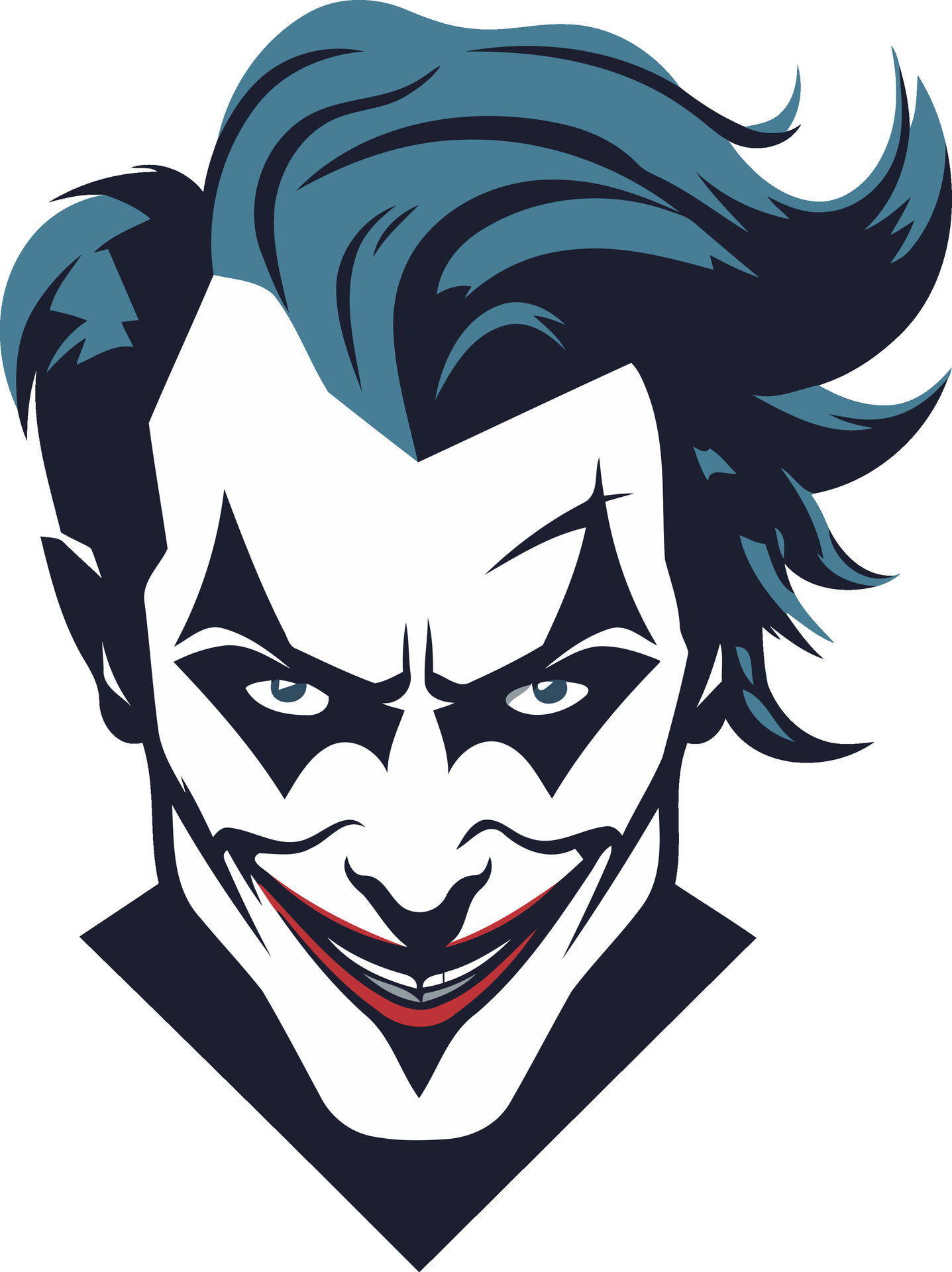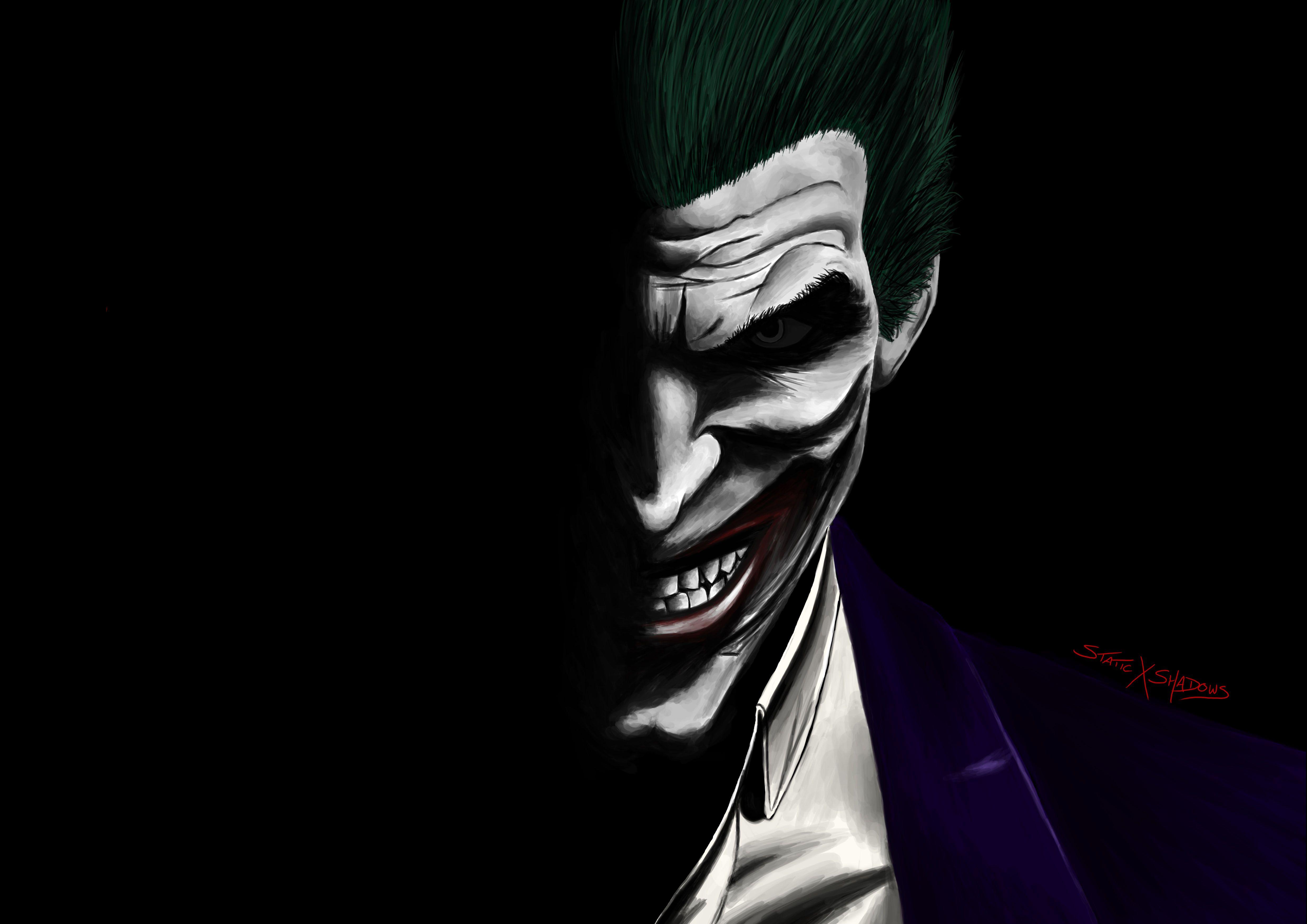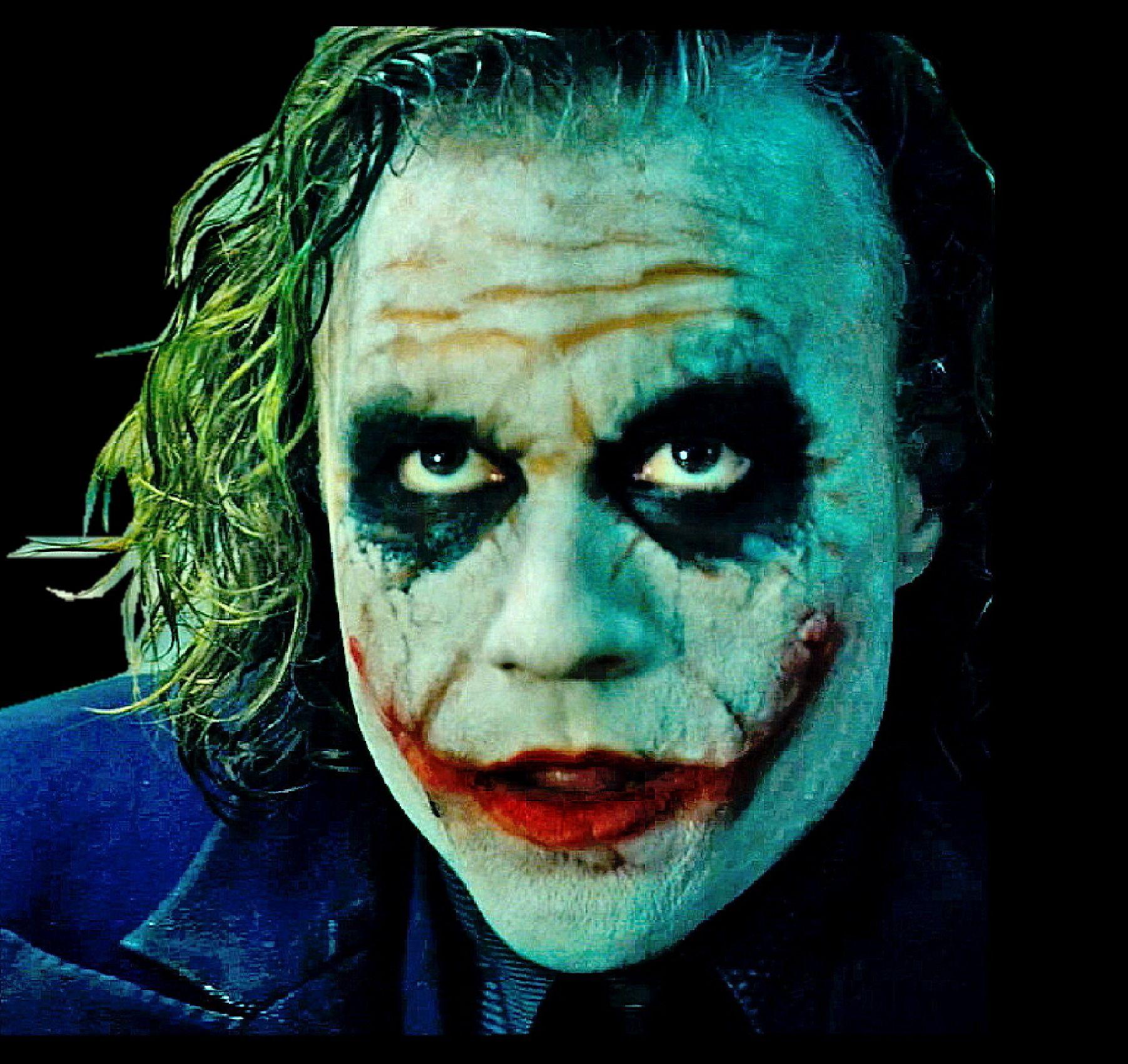Pictures Of Joker's Face: Unveiling The Dark And Mesmerizing Icon
Ever wondered why pictures of Joker's face have become such a phenomenon in pop culture? It's more than just a clown-like grin; it's an emblem of chaos, rebellion, and raw emotion. From his first appearance in comic books to the silver screen, Joker's face has evolved into a symbol that resonates with millions worldwide. Let’s dive deep into why this visage continues to captivate audiences across generations.
There's something undeniably magnetic about the Joker's face. It's not just the makeup or the scars—it's the story behind it, the layers of madness, and the way it challenges societal norms. Whether you're a die-hard fan of Batman or simply curious about why this character has such staying power, this article will give you a fresh perspective on the enigma that is Joker.
In this piece, we'll explore everything from the origins of Joker's iconic look to the cultural impact of pictures of Joker's face. We'll also take a closer look at how different interpretations of his appearance have shaped his legacy. So, buckle up because we’re about to embark on a wild ride through the world of chaos incarnate!
- Alex Wagner Wedding Gown The Story Behind Her Perfect Day
- Arielle Kebbel The Rising Star Who Captures Hearts On And Off Screen
Table of Contents
- Biography: The Man Behind the Mask
- Origins of Joker's Face
- The Cultural Impact of Joker's Face
- Iconic Looks: A Journey Through Time
- Psychology Behind Joker's Appearance
- Fan Art: How Fans Reimagine Joker's Face
- Film Interpretations of Joker's Face
- Modern-Day Relevance of Joker's Face
- Collectibles Featuring Joker's Face
- Conclusion: Why Joker's Face Matters
Biography: The Man Behind the Mask
Before we dive into the pictures of Joker's face, let's talk about the man—or rather, the myth—behind the mask. Joker is one of the most iconic villains in comic book history, and his backstory is as twisted as his smile. Unlike many other characters, Joker doesn't have a definitive origin story. In fact, his past is intentionally shrouded in mystery, adding to his allure. Some versions suggest he was once a failed comedian, while others hint at a tragic accident involving chemicals. But one thing remains constant: his transformation into the Clown Prince of Crime.
Data and Biodata
| Name | Joker |
|---|---|
| Alias | The Clown Prince of Crime, The Ace of Knaves |
| First Appearance | Detective Comics #1 (1940) |
| Creator | Bill Finger, Bob Kane, Jerry Robinson |
| Arch-Enemy | Batman |
Now that we’ve got the basics down, let's move on to the fascinating origins of Joker's face.
Origins of Joker's Face
Let’s rewind the clock to 1940 when Joker first made his debut in Detective Comics #1. His face was inspired by Conrad Veidt’s character Gwynplaine from the 1928 film "The Man Who Laughs." The exaggerated grin and tragic expression were perfect for creating a villain who embodied both comedy and tragedy. Over the years, artists have reinterpreted Joker's face countless times, but the core elements—pale skin, green hair, and red lips—remain unchanged.
- Unveiling The Mysteries Of October Star Sign Unlock Your Zodiac Destiny
- Is Lady Gaga Transsexual Unveiling The Truth Behind The Rumors
Evolution of Joker's Appearance
From the early days of comics to the modern cinematic adaptations, Joker's face has undergone several transformations. Here’s a quick rundown:
- Classic Comics Look: Think pale skin, exaggerated smile, and a slightly more cartoony appearance.
- Dark Knight Version: Heath Ledger's portrayal brought a darker, grittier aesthetic with scars forming his smile.
- Joaquin Phoenix’s Joker: This version takes a more realistic approach, focusing on the psychological aspects of his appearance.
Each iteration adds depth to Joker's character, making him a timeless figure in pop culture.
The Cultural Impact of Joker's Face
Joker's face isn't just a character design—it's a cultural phenomenon. It has transcended the pages of comic books and become a symbol of rebellion and anti-establishment sentiments. You’ve probably seen memes, tattoos, and even protest signs featuring Joker's face. Why? Because it represents chaos and disruption, qualities that resonate with people who feel disillusioned by the status quo.
But it's not all about rebellion. Joker's face also sparks conversations about mental health, trauma, and societal issues. Films like "Joker" (2019) delve into these themes, shedding light on the darker aspects of human nature.
Iconic Looks: A Journey Through Time
Let’s take a trip down memory lane and explore some of the most iconic looks of Joker's face:
1940s-1960s: The Golden Age
In the early days, Joker's face was more cartoonish, with bright colors and a playful vibe. This was the era of pulp fiction and black-and-white TV shows, where villains were often larger than life.
1970s-1980s: The Dark Age
As comics became more mature, so did Joker's appearance. The '70s and '80s saw a shift toward darker themes, with Joker's face reflecting his increasing menace. Think "The Killing Joke" by Alan Moore, where Joker's face is both terrifying and tragic.
Modern-Day Interpretations
Today, Joker's face continues to evolve, with each new adaptation bringing something fresh to the table. Whether it's the anarchic energy of Mark Hamill’s animated version or the haunting presence of Joaquin Phoenix’s portrayal, Joker's face remains a source of fascination.
Psychology Behind Joker's Appearance
Why does Joker's face have such a powerful effect on us? Psychologists suggest it’s because it taps into our primal fears of the unknown. The exaggerated features, the unnatural smile, and the chaotic energy all work together to create a sense of unease. Joker's face is a visual representation of the unpredictable and the uncontrollable—qualities that make him both terrifying and mesmerizing.
Moreover, Joker's face serves as a mask, hiding the pain and trauma beneath. This duality is what makes him such a complex character. As viewers, we’re drawn to him because he challenges our perceptions of good and evil.
Fan Art: How Fans Reimagine Joker's Face
Fan art plays a crucial role in keeping the legacy of Joker's face alive. Artists around the world have reimagined his appearance in countless ways, from traditional paintings to digital masterpieces. Some stay true to the source material, while others experiment with new styles and interpretations.
What’s fascinating is how fan art reflects the diversity of Joker's fans. Whether you prefer a more whimsical take or a darker, grittier version, there’s something for everyone. And let’s not forget the impact of social media platforms like Instagram and DeviantArt, where fan art can reach a global audience in seconds.
Film Interpretations of Joker's Face
When it comes to pictures of Joker's face, movies have played a significant role in shaping public perception. Let’s take a look at some of the most memorable cinematic portrayals:
Heath Ledger’s Joker
Christopher Nolan’s "The Dark Knight" gave us one of the most iconic versions of Joker's face. Heath Ledger’s portrayal, with its scarred smile and chaotic energy, redefined the character for a new generation. The film’s success proved that Joker’s face could be just as powerful on the big screen as it was in comic books.
Joaquin Phoenix’s Joker
In Todd Phillips’ "Joker," we see a more grounded and psychological approach to Joker's face. Joaquin Phoenix’s performance brings a raw, emotional depth to the character, focusing on the mental and physical toll of his transformation. This version of Joker’s face is less about the makeup and more about the man behind it.
Modern-Day Relevance of Joker's Face
In today’s world, Joker's face continues to be relevant. It’s not just a symbol of chaos—it’s a reflection of the times we live in. With increasing awareness of mental health issues and social inequality, Joker’s story resonates with audiences more than ever before.
Moreover, Joker's face has become a canvas for political and social commentary. Protesters around the world have used his image to highlight issues like corruption, inequality, and injustice. It’s a testament to the power of art and its ability to transcend its original context.
Collectibles Featuring Joker's Face
For fans of pictures of Joker's face, there’s no shortage of collectibles to choose from. Whether it’s action figures, posters, or limited-edition prints, there’s something for every budget. Companies like DC Collectibles and Funko Pop have capitalized on Joker’s popularity, offering a wide range of products that cater to both casual fans and serious collectors.
But it’s not just about owning a piece of memorabilia—it’s about connecting with a character that has become a cultural icon. Each collectible tells a story, whether it’s a classic comic book cover or a modern film poster.
Conclusion: Why Joker's Face Matters
We’ve journeyed through the origins, cultural impact, and modern-day relevance of Joker's face. Along the way, we’ve explored everything from his comic book roots to his cinematic legacy. So, why does Joker's face matter? Because it’s more than just a character design—it’s a symbol of everything that makes storytelling so powerful.
As fans, we’re drawn to Joker's face because it challenges us to think differently about the world around us. It reminds us that even in the darkest of times, there’s beauty in chaos. And that’s something worth celebrating.
So, what’s next for Joker's face? Only time will tell, but one thing’s for sure—it’s here to stay. And if you’ve enjoyed this deep dive into the world of Joker, don’t forget to share your thoughts in the comments below. Who knows? Maybe we’ll see you in the next article!
- Kimberly Trump The Rising Star In The Spotlight
- Deborah Bollman The Remarkable Story Of A Trailblazer In Her Field

Joker's Face Illustration 49271043 Vector Art at Vecteezy

Joker Face Wallpapers Wallpaper Cave

Joker Face Wallpapers Wallpaper Cave